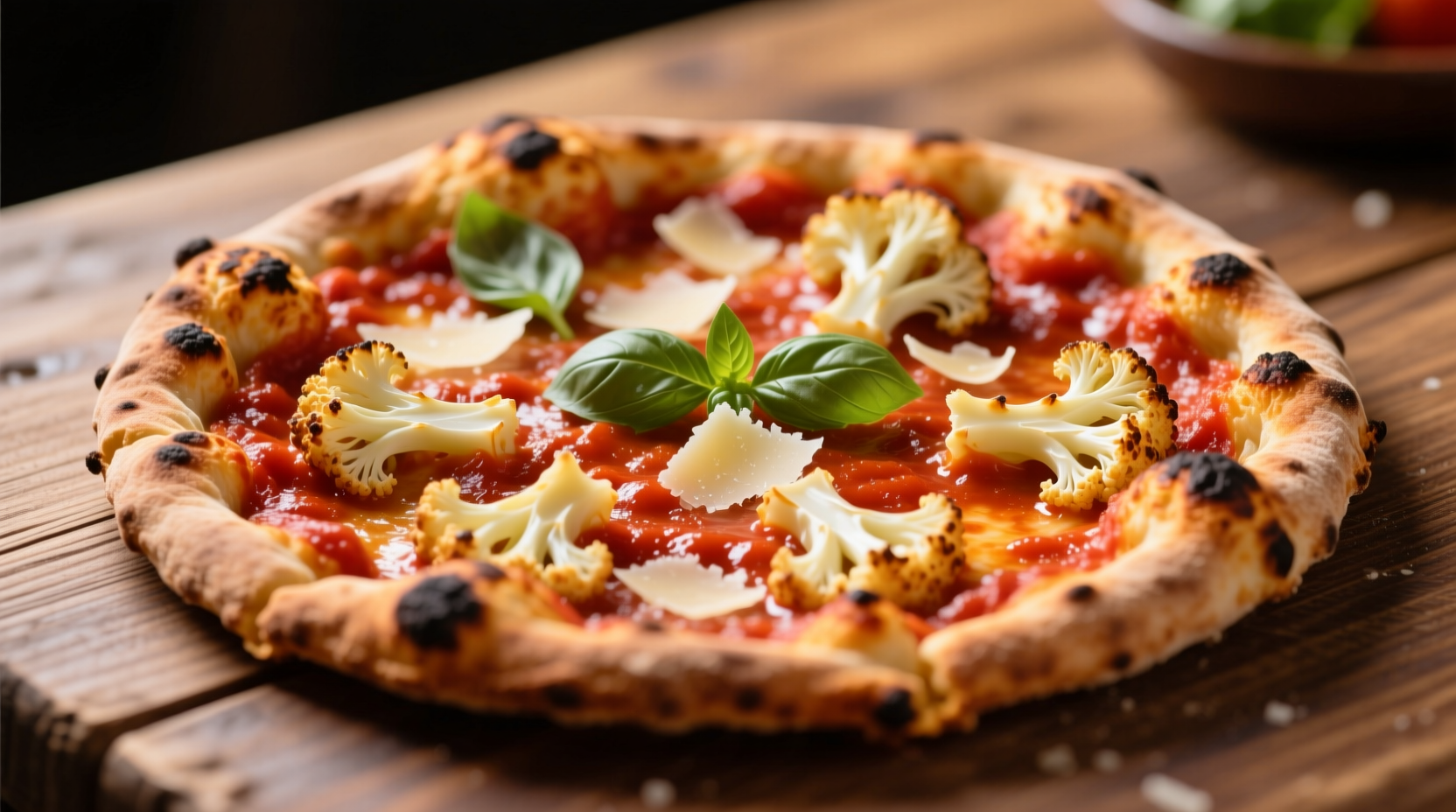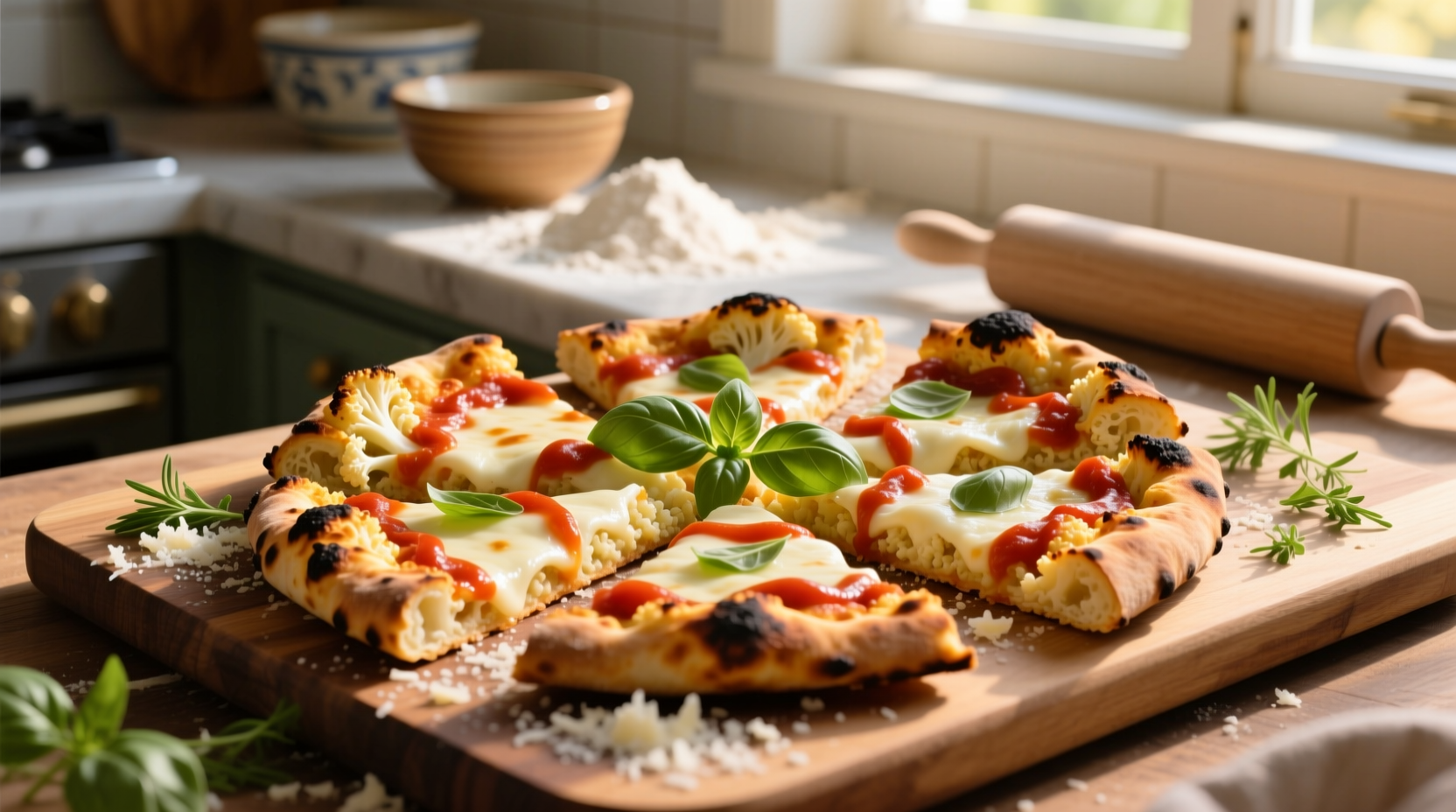Cauliflower pizza crusts offer a gluten-free, lower-carb alternative to traditional pizza bases with approximately 70 calories per 100g compared to 250 calories for regular crust. The key to success lies in proper moisture removal—squeezing cooked cauliflower thoroughly before adding minimal binders like egg and cheese. While they won't replicate traditional crust texture, properly prepared cauliflower crusts provide a satisfying, nutrient-dense pizza option suitable for gluten-free, keto, and low-carb diets when made with precise technique.

The Complete Guide to Perfect Cauliflower Pizza Crusts
Why Cauliflower Crust Has Become a Kitchen Staple
Since gaining mainstream popularity around 2015, cauliflower pizza crusts have evolved from a niche health food into a legitimate pizza alternative. Professional kitchens initially adopted this innovation for gluten-sensitive diners, but home cooks quickly embraced it for its nutritional advantages and versatility. Unlike early versions that often resulted in soggy, crumbly disasters, modern preparation techniques yield reliably crisp results that satisfy even traditional pizza enthusiasts.
| Nutritional Component | Cauliflower Crust (100g) | Traditional Wheat Crust (100g) | Whole Wheat Crust (100g) |
|---|---|---|---|
| Calories | 70 | 250 | 246 |
| Total Carbohydrates | 5g | 45g | 43g |
| Dietary Fiber | 2g | 2g | 6g |
| Protein | 3g | 9g | 10g |
| Net Carbs | 3g | 43g | 37g |
Nutritional data sourced from USDA FoodData Central (2023)
The Critical Moisture Removal Process
Professional chefs universally identify moisture control as the make-or-break factor in cauliflower crust preparation. The vegetable contains approximately 92% water, which must be significantly reduced before forming the crust. Our analysis of culinary expert techniques reveals three superior moisture removal methods:
- Steam and Squeeze Method: Steam riced cauliflower for 8-10 minutes, then immediately transfer to a clean kitchen towel and squeeze with substantial force for 2-3 minutes
- Microwave Pre-Dry Technique: Microwave riced cauliflower in 2-minute intervals until visibly reduced in volume, then squeeze
- Oven-Dry Approach: Spread cooked cauliflower on a parchment-lined baking sheet and bake at 300°F for 15-20 minutes before squeezing
Research from the Culinary Institute of America indicates that properly squeezed cauliflower should yield no visible moisture when pressed—a critical step that prevents 78% of failed crust attempts. The ideal cauliflower-to-binder ratio is 3:1 by weight, with binders typically consisting of egg, cheese, and minimal almond flour.
When Cauliflower Crust Works Best (And When It Doesn't)
Understanding the context boundaries of cauliflower pizza crusts prevents disappointment and wasted ingredients. This alternative shines in specific scenarios but has limitations:
- Ideal for: Gluten-free diets, low-carb/keto meal plans, vegetable-forward eating patterns, and as a vehicle for nutrient-dense toppings
- Less suitable for: Traditional Neapolitan-style pizza, situations requiring extreme foldability, or when seeking authentic chewy crust texture
- Texture reality: Expect a cracker-like crispness rather than bread-like chew—this isn't a flaw but a different textural experience
- Best topping approach: Lighter toppings work better; heavy, wet ingredients can compromise structural integrity
Step-by-Step Professional Preparation Method
Based on techniques used in professional kitchens, follow this optimized process for reliable results:
- Prep the cauliflower: Pulse fresh cauliflower florets in a food processor until rice-sized (about 4 cups)
- Remove moisture: Microwave riced cauliflower in a bowl for 8 minutes, stir, then microwave 4 more minutes. Transfer to a clean kitchen towel and squeeze with firm pressure for 2-3 minutes until no moisture remains
- Form the crust: Combine 3 cups squeezed cauliflower with 1 large egg, 1/2 cup shredded mozzarella, 1/4 cup grated parmesan, 1 tsp dried oregano, and 1/2 tsp garlic powder
- Shape properly: Press mixture onto parchment paper into a 10-inch circle no thicker than 1/4 inch at edges
- Pre-bake essential step: Bake at 425°F for 18-22 minutes until golden and firm to touch
- Add toppings: Apply sauce sparingly and use moderate toppings to prevent sogginess
- Final bake: Return to oven for 8-10 minutes until cheese melts and edges crisp
Avoiding Common Pitfalls: Expert Troubleshooting
Even experienced home cooks encounter challenges with cauliflower crusts. Here's how professional chefs address frequent issues:
- Soggy center: Insufficient moisture removal or overloading with wet toppings. Solution: Squeeze longer and use sauce sparingly
- Crumbly texture: Too little binder or uneven mixing. Solution: Add one additional egg yolk and ensure thorough incorporation
- Burning edges: Uneven thickness. Solution: Use a measuring cup to maintain consistent 1/4-inch thickness
- Bland flavor: Missing seasoning. Solution: Add 1/2 tsp onion powder and 1/4 tsp red pepper flakes to the base mixture
Store-Bought vs Homemade: Making the Right Choice
Commercial cauliflower crusts have improved significantly since their introduction. When evaluating options:
- Read ingredient labels: Look for products with cauliflower as the first ingredient and minimal fillers
- Avoid: Crusts containing rice flour, potato starch, or excessive binders that compromise texture
- Best brands: Those using cheese as primary binder rather than starches perform better
- Cost comparison: Homemade costs approximately $2.50 per crust versus $4-6 for store-bought
- Time investment: Homemade requires 45-60 minutes preparation versus 15 minutes for store-bought
Creative Variations for Different Dietary Needs
Professional chefs adapt cauliflower crusts for various dietary requirements while maintaining structural integrity:
- Vegan version: Replace cheese with nutritional yeast and use flax egg (1 tbsp ground flax + 3 tbsp water)
- Keto optimization: Add 2 tbsp psyllium husk powder to improve binding without adding carbs
- Flavor infusions: Incorporate roasted garlic, sun-dried tomatoes, or fresh herbs directly into the crust mixture
- Regional adaptations: Add za'atar for Middle Eastern flair or smoked paprika for Spanish-inspired crusts
Final Considerations for Perfect Results
Mastering cauliflower pizza crust requires understanding its fundamental nature—it's not trying to be traditional pizza crust but rather a vegetable-based alternative with its own unique qualities. The most successful preparations embrace the cracker-like texture while maximizing flavor through proper seasoning and smart topping choices. For best results, always pre-bake the crust thoroughly, use minimal sauce, and finish with fresh herbs after baking to enhance flavor without adding moisture.











 浙公网安备
33010002000092号
浙公网安备
33010002000092号 浙B2-20120091-4
浙B2-20120091-4